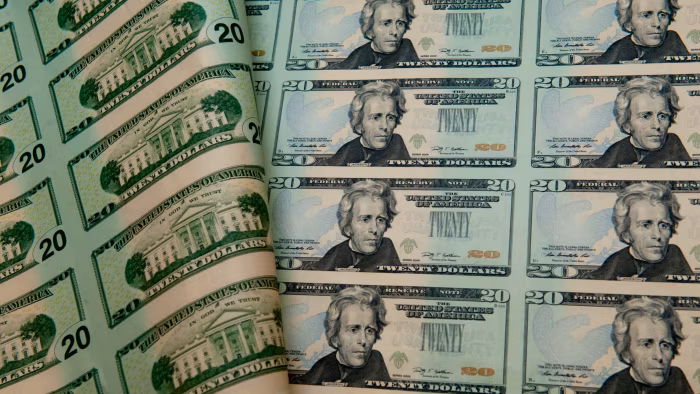
With the demand for falling US assets, the dollar faces historical pressures that can lead to deeper devaluation in the coming months
I admit: I often avoid questions about the dollar. A vast academic literature and my own experience as a forecast economist have taught me that predicting exchange rates is even more difficult than predicting growth, inflation and interest.
But with all humility, I believe that the recent devaluation of 5% of the dollar, based on a wide commercial weighting, still has a long way ahead.
Data from the Federal Reserve show that the real value of the dollar is still almost two above-average standard deviations since the beginning of the floating exchange rate age in 1973. The only two historical periods with similar levels of appreciation were mid-1980s and early 2000s. Both prepared the land for 25 to 30%devaluation.
Combined with continuous portfolio flows for US assets, and the country’s superior performance performance, the valorization of the dollar markedly increased US participation in global investor portfolios.
The IMF estimates non -American investors now have $ 22 trillion in US assets. This may represent a third of their combined wallets – and half of it is in action, which often have no currency hedge. A decision by non -American investors to reduce their US exposure almost certainly result in a significant devaluation of the dollar.
In fact, even the reluctance of non -American investors in increasing their US wallets will likely press the dollar. This is because the balance of payments accounts implies that US $ 1.1 trillion’s US current account deficit should be funded by a $ 1.1 trillion net unlicens per year.
In theory, this could come through foreign US portfolio asset purchases, US direct investment in the US or sale of foreign assets from the US. In practice, however, most oscillations in US current account balance correspond to oscillations in foreign US portfolio assets.
If non -American investors do not want to buy more US actives at current prices, these prices should fall, the dollar should weaken or (more likely) both.
These observations would not be so relevant if the US economy was intended to continue overcoming its peers, as it has done most of the last two decades. But that seems unlikely, at least in the next two years. At Goldman Sachs, we recently reduced our growth predictions in all major economies due to tariff shock, but nowhere more than in the US.
We lowered our US GDP growth estimate from the fourth quarter of 2024 to the same period of this year, from 1% to 0.5%. With GDP and corporate profits slowly growing at best, an increase in US political uncertainty measures, and questions about Fed’s independence, we hope non -American investors will reduce their appetite for US assets.
Dollar devaluation should not be confused with the loss of its status as a dominant currency in the world. Barring extreme shocks, we believe the advantages of the dollar as a global change and value reserve are so consolidated that other currencies will not be able to overcome them. We have had large currency movements without loss of the dominant dollar status in the past, and our basic expectation is that the current movement will be no different.
What are the economic consequences of a weaker dollar? First, he exacerbates upward pressure on tariff -related consumer prices. Only tariffs are likely to raise central inflation – measured by the Personal Consumption Spell Price Index (PCE) – from 2.75% now to 3.5% later this year, and we estimate that dollar devaluation could add about 0.25 percentage point.
Although this is modest, the devaluation of the dollar reinforces our view that the “incidence” of the highest US tariffs will predominantly fall on US consumers, not on foreign producers.
Second, a weaker dollar not only increases import prices and consumer, but also reduces export prices (measured in foreign currency). In the medium term, this relative price change should help reduce US commercial deficit, one of the Trump government’s goals. Therefore, US policy formulators will hardly prevent dollar devaluation, even without any “sea-lag agreement.”
Third, in principle, a weaker dollar could relieve financial conditions and help keep the US economy away from recession. But the devaluation engines matter. Reduction of US assets appetite, including Treasury Titles, could compensate for the impact of a weaker currency on financial conditions.
Anyway, the most important determinant of whether the US will be recession is not the dollar. A decision to implement additional “reciprocal” tariffs after the current 90-day break, a US-china trade war or additional aggressive tariffs on specific products can make recession inevitable no matter where the dollar goes.
The author, Jan Hatzius, is Goldman Sachs chief economist for the Financial Times*
Source: https://www.ocafezinho.com/2025/04/24/o-declinio-silencioso-da-moeda-mais-poderosa-do-mundo/

